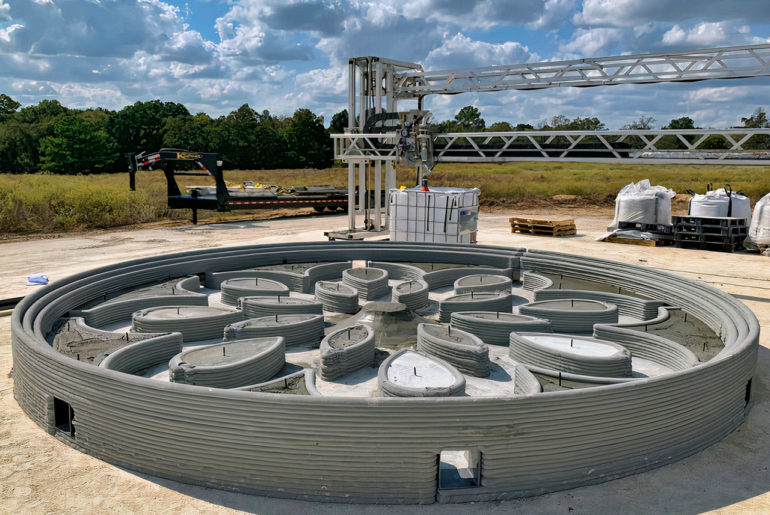![]()
NASA’s Artemis Generation program challenges students to help solve problems, and this proposal from ten U.S. colleges and universities has created the world’s first 3D printed rocket pad for lunar missions. This innovative reusable prototype rocket landing and launch pad, called Lunar PAD, was 3D printed using a cement-based material extruded from ICON’s gantry print system at a Texas Military Department location in Camp Swift.
The launch / landing pad used during the Apollo missions resulted in large dust clouds caused by powerful Saturn V rocket engine exhaust, thus greatly reducing visibility, but the Lunar PAD features a series of petal-like channels to solve this issue. That’s right, the exhaust is sent upward and outward simultaneously, trapping dust and minimizing clouds from the force of the rocket engines.
- Resume Printing Function: no worry to the immediate power outage or electric circuit error, Ender 3 has the ability to resume printing even after a...
- Creality Ender 3 3d printer, it is the most basic 3d printer model, more students and beginners can learn the 3d printer by this model, it can help to...
- Advanced Extruder Technology: Ender 3 upgraded extruder greatly reduces plugging risk and bad extrustion; V-shape with POM wheels make it move...
The proposal addressed a technology pain point, as the project enables a safe and reusable landing pad required for sustainable lunar exploration. The team worked many hundreds of hours, engaged NASA subject matter experts, and went from concept formulation to a preliminary design. They then turned that design into reality with the sub-scale construction, all in a few short months,” said John Dankanich, Marshall Space Flight Center Chief.





